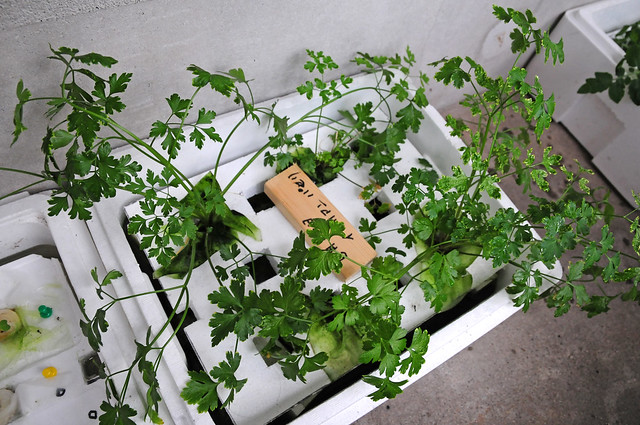After Japan was hit by an earthquake, a tsunami and a nuclear meltdown in 2011, it was clear that recovery would take a while. This was particularly true in the agricultural sector of the coastal regions affected by the catastrophe, where rubble- and sea water-soaked soils made planting nearly impossible. Overall, irrigation canals, roads and other infrastructure in over 60,000 acres of farmland were destroyed, along with the livelihoods (and often lives) of many of the farmers in the region (the disaster is reported to have caused $30 billion in losses to the sector).
However, this event gave the Japanese government a “clean slate” to implement a shift in agricultural policy that may have been a long time coming, according to this article in the Christian Science Monitor. They cite a governmental employee in the agricultural reconstruction office of Sendai as saying “we don’t want to go back to what we had before. We’re aiming for something new that addresses the basic problems facing the agriculture sector” – problems including the ageing of farmers, small farm sizes, and the threat of trade liberalization and cheap food imports in a sector that is perceived to be of low competitiveness.

Image by Takato Marui, via Flickr CC.
The alternative: a triple industrial agriculture reform pushing farm expansion, incorporation, and integration with other industries through heavy-handed government action. Instead of the traditional small-scale family farms (farms are on average still 5.6 acres big on average), the goal now is to create efficient corporate farms which are closely linked to food processing plants and the service industry.
Furthermore, the government is officially promoting high-tech factory farms for fruits and vegetables in which computers regulate environmental conditions such as light, temperature and carbon dioxide concentrations, making them completely independent of weather conditions.
These non-soil farming initiatives are heralded as the rescue of farmers that were left with oversalinated, potentially radiated land, offering these farmers jobs and revive their area, all the while producing produce with cutting-edge technologies.
Sendai serves as the petri-dish for such governmental action: in the city, tax breaks are given to certain (large) farms in the disaster area, and city hall recently launched a $38.5 million Agriculture and Food Project. Corporations additionally receive disaster recovery subsidies and can thus cover a significant chunk of their start-up costs for opening the futuristic “indoor hydroponic “plant factories” where tomatoes, spinach, and other vegetables will grow under precisely regulated conditions” that the government aims to support.
Furthermore, the traditional small, irregular rice fields that border the city’s edges will be reshaped into uniform 2.5 acre lots this coming fall; and all farmers that own less than 2.5 acres will be forced to join into groups to share a field, or to rent out their fields to others. Though two-thirds of farmers have to formally agree to this plan for it to be implemented, it is unclear how far they are free in their decision-making, since already many other regulations are geared towards this more unified model: the free lease of farm machinery is restricted to groups of three farmers or more, for example.
These plans are presumably intentioned to save costs on machinery and to increase farming efficiency, but it may create significant tensions in the rural communities: “We’re all used to being the boss, so it’s hard to work together,” says Yoshiichi Miyura, a 63-year-old member of the group, as he sits on an upturned crate trimming greens on a recent afternoon,” as the article reports. While collective farming has led to knowledge-sharing, better risk management and indeed farming cost reductions elsewhere, it’s debatable whether forced collaboration like this is the way to get to this point.
Furthermore, the overall aim of this industrial overhaul of Japanese agriculture might be misguided, as Steven McGreevy, a sustainable farming scholar, argues: “You have to ask, does rebuilding Tohouku agriculture in an industrialized, high-efficiency mode really offer long-term food security, viable farming-based livelihoods, and living rural communities? Instead of addressing root problems of agriculture and food in Japan, such as overexposure to globalized food markets, we’re moving toward an attempt to corner niche agricultural markets for export.”
I find this move particularly worrisome as Japan is one of the countries where the concept of Community Supported Agriculture originated – in the form of Seikyou. Seikyou was developed in the 1960s, originally as an effort by Japanese housewives to form close bonds to their local farmers in order to enjoy “clean”, pesticide-free food. It has survived and thrived over time in Japan as a celebration of rural-urban community and continues to provide conscientious, environmentally friendly products to consumers in the country, though its distribution methods have changed somewhat (click here for a great account on the development of Seikyou). If the government-supported concept of industrial agriculture takes hold on an even larger scale, this type of community (and rural community in general) might be set up for decline – right as we are rediscovering its importance in the US and Europe alike…
What do you think? Is the futuristic, industrial-style agriculture a necessary adjustment after the catastrophe for Japanese farmers or a poorly thought-out misinvestment of government funds?
Visit the Los Angeles Guerilla Gardening (LAGG) tool on the sidebar at euzicasa, and thanks for the valuable example you are for us all Janina! God Speed!